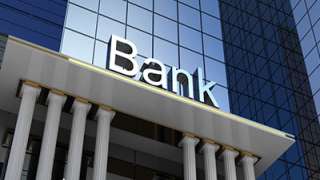MEDIA
Banks Mulling: To Allow Or Disallow NBFC Loans Under 3-Month Moratorium?
www.outlookindia.com | May 30, 2020
The RBI directive suggested that all lending institutions such as banks, Non-banking Finance Companies (NBFCs), Housing Finance Companies (HFCs), Micro Financial Institutions (MFIs) and others will permit term loan borrowers (including agricultural term loans, retail and crop loans) and credit card borrowers a three-month moratorium on payment of all instalments falling due between 1 March to 31 May 2020. RBI has also permitted to defer recovery of interest applied concerning cash credit and overdraft facilities between a period 1st March to 31 May, 2020. However, interest will continue to accrue on the outstanding portion of the term loan, Cash Credit (CC) or Overdraft facilities (OD) during the moratorium period. In the case of CC and OD facilities, the accumulated accrued interest on such a sanctioned amount shall be recovered immediately after the completion of this period.
The directive also mentioned that lending institutions shall frame Board-approved policies for providing the above-mentioned reliefs to “all eligible borrowers” leaving the three-month moratorium decision on the lending institutions' policies. So lending institutions (especially banks), decided to permit all borrowers to avail of the three-month moratorium relief except the NBFC category.
So, where the problem is one might ask, there is an ongoing debate whether banks should provide a three-month relief window to an NBFC (which is a banks’ borrower).
For example, the RBI directive requires clarity whether an NBFC can avail the three-month moratorium relief from its bank lender under “easing of working capital financing”.
Can “Bank A” provide a three-month relief window to its borrower NBFC X?.
The answer remains unclear.
However, the Indian Banks Association (IBA) is mulling over whether a three-month moratorium window for the loans of NBFCs should be considered?
What will happen if the NBFCs are unable to avail of the moratorium window?
Let us understand how NBFCs fund their balance sheets. NBFCs rely heavily on bank loans, commercial paper and debentures to fund their operations. Given, banks do not allow the moratorium window, they will have to honour their loans and interest repayments. Under normal circumstances, a borrower at an NBFC would repay his loan (cash inflow), the NBFC would use this cash to repay banks (cash outflow) or debenture holders or commercial paper holders.
If a three-month moratorium is offered to NBFC borrowers, it creates a problem. There is no or limited cash inflow from the borrower side but NBFC still has to honour their bank loan repayments (cash outflow). This will lead to a temporary Asset-Liability Mismatch (ALM) and liquidity problem.
What can an NBFC do to resolve this temporary cash inflow or outflow mismatch?
The NBFC can approach the debt market for financing (raise new debt). RBI has provided for liquidity support to these Financial Intermediaries under the recently introduced Targeted Longer-Term Refinancing Operations (TLTRO). Under the TLTRO, banks can raise funds under this scheme, however, they have to deploy it in investment-grade corporate bonds, commercial paper and non-convertible debentures over and above their existing level of investments. One might think the problem is solved, however, banks will make investments in investment-grade or high-quality instruments issued by NBFCs, with a good market standing. Not all NBFCs have a very high market standing as they may not be able to raise funds in the debt market.
What if the NBFC is unable to raise finance in the debt market?
A NBFC has to repay not only bank loans (principal + interest) but also has to meet repayment of interest on debentures and commercial paper (no moratorium is provided on interest on debenture and commercial paper). So in such an extreme scenario,
1) new lending may be frozen
2) inability to raise funds might lead to a default on loan repayments.
In case a NBFC faces the heat on both ends, it may intensify borrower repayments or may go slow on offering the moratorium window to borrowers using the caveat in the RBI directive, “the three-month moratorium relief window is based on board-approved policies for all eligible borrowers”.
For instance, if a ‘cab driver’ has an outstanding NBFC loan of Rs 500,000 at 12 per cent (per annum.). He is generating “negligible or limited” income during this lockdown period. If this cab driver avails the three-month moratorium, the interest on his loan will continue to balloon i.e. Rs 5,000 per month and in June, he has to pay either the lump sum i.e. Rs 15,000 interest or partly (based on the NBFC policies) plus the interest on interest i.e. Rs 150 (1 per cent on Rs 5,000 interest). If the lockdown extends, the cab driver has limited time to generate income to meet the lump sum or part payment or he will default. Expecting a slow economic recovery, there is a high likelihood that the cab driver might default and lose his car permanently (because a NBFC will seize possession of the car for non-repayment).
So, this three-month moratorium window does not provide adequate relief for small borrowers and RBI should consider a 6 to 12 month moratorium for loan repayment and include NBFCs under the moratorium window as well. Otherwise, not only will defaults increase but borrowers may permanently lose their income source.
The author is the Assistant Professor (Finance and Accounting) at FLAME University

